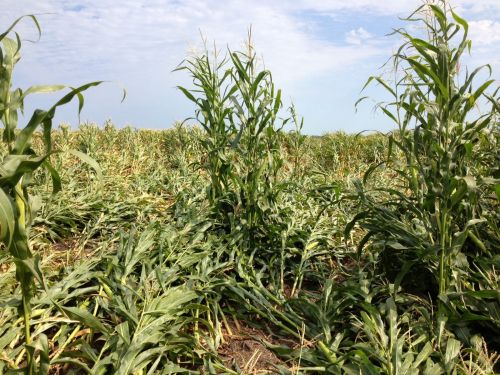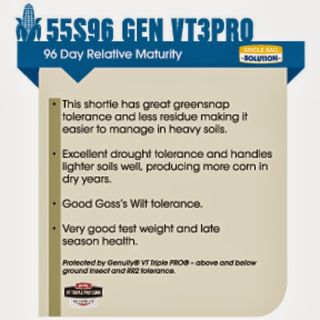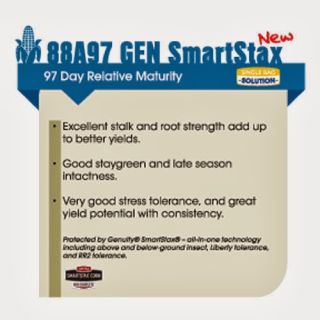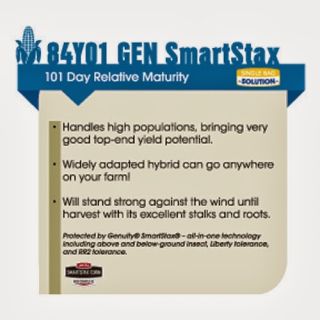Scout Corn Fields for Rootworm Beetles
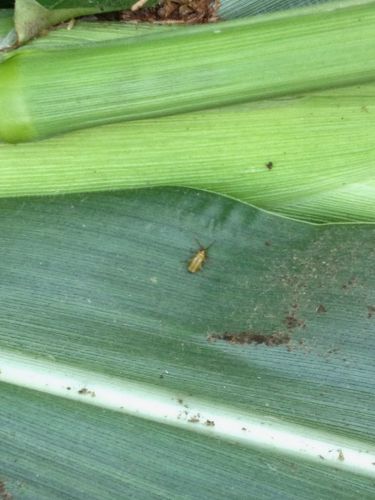
Corn rootworm (CRW) has never been a major economic pest in ND or northwestern MN. Although with an increase in corn acres over the past 10 years and tightening of our crop rotations, it is a potential threat that needs monitoring. I do not think we need to select hybrids with traits that protect against CRW for all of our corn-on-corn or tight rotations. However, if you notice root lodging this fall, and if you have planted corn-on-corn in any fields for over two years, consider planting a CRW-traited hybrid.
Lodging due to corn rootworm
In early September, I scouted a silage field in eastern ND, where the farmer was concerned about root lodging. The field in question had been planted corn-on-corn for 13 years. During my visit, I noticed severe root lodging in at least 20% of the field, numerous rootworm adults feeding on the ends of the cobs and remaining silks, and severe feeding to the roots. All rootworm present were the northern corn rootworm, which is the most prevalent type in our region.
Northern corn rootworm
The northern corn rootworm, pictured above, is tan to pale green in color and about one-quarter of an inch long. With one lifecycle per year, the adults lay eggs in the fall, and those eggs hatch from late May to June. The larvae damage the plant most severely by feeding on the roots, which limits the amount of water and nutrients the plant can absorb. Reduced root mass can result in a lodging issue. From late July to mid-August, the adult beetles emerge, mate, and lay eggs. These adults feed on pollen, green silks, and leaves. Silks that are chewed back to less than half an inch can cause poor pollination. CRW can be effectively controlled. Single and double stacked traits are available in most maturities where rootworm has been found. Trait resistance has developed in areas with extreme pressure and in areas where an insect resistance management plan (refuge) has not been followed. Resistance has not yet been confirmed in our area, so using a single or double stacked CRW trait will be sufficient when the correct refuge is placed in the field. The refuge component is most often available in the bag, making compliance immediate and easy. The agronomy team at PFS recommends these stellar CRW-traited hybrids to growers:
This high-yielding hybrid is a great fit for growers in the Dakotas and Minnesota.
Good seedling vigor with this new hybrid allows for early planting.
With top yield potential, 84Y01 is widely adapted and well suited for Minnesota growers.
Continue to scout your fields through harvest to determine if beetles are present. If your rotation with corn has increased, or if you’ve noticed areas of CRW in your fields, consider a CRW-traited hybrid for 2014.

